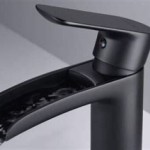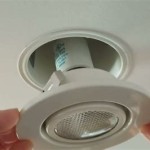How to Install a Bathroom Vessel Sink Drain
Installing a bathroom vessel sink drain requires a combination of plumbing knowledge and meticulous attention to detail. It is a project that homeowners can tackle themselves, but it necessitates a careful approach to ensure proper functionality and prevent leaks. This article outlines the necessary steps, tools, and considerations for a successful vessel sink drain installation.
Step 1: Gather Necessary Tools and Materials
Before embarking on the installation, it is crucial to gather all the necessary tools and materials. This includes:
- Vessel sink drain assembly (including pop-up stopper, tailpiece, and mounting nut)
- Adjustable wrench
- Channel-lock pliers
- Plumber's tape (Teflon tape)
- Silicone sealant
- Caulk gun
- Level
- Measuring tape
- Utility knife
- Screwdriver
- Safety glasses
- Work gloves
The specific drain assembly will depend on the vessel sink's design and desired functionality. It is essential to choose a drain compatible with the sink's overflow mechanism, if applicable.
Step 2: Prepare the Sink and Drain Hole
With the tools and materials at hand, the next step is to prepare the sink and drain hole. Begin by placing the vessel sink on a flat surface, ensuring it is stable and secure. Locate the drain hole at the bottom of the sink and inspect its size and shape.
Carefully measure the diameter of the drain hole and compare it to the mounting nut on the drain assembly. If necessary, use a utility knife or a suitable tool to trim any excess sealant or debris around the drain hole, achieving a clean and precise opening for the drain assembly.
Step 3: Assemble the Drain Assembly
The drain assembly typically comprises three main components: the pop-up stopper, the tailpiece, and the mounting nut. Start by assembling these components as per the manufacturer's instructions. Ensure that the pop-up stopper operates smoothly and that the tailpiece connects securely to the mounting nut.
Before attaching the drain assembly to the sink, wrap the threads of the mounting nut with plumber's tape (Teflon tape). This creates a watertight seal and prevents leaks. Apply the tape in a consistent, clockwise direction, ensuring the threads are fully covered.
Step 4: Install the Drain Assembly in the Sink
With the drain assembly assembled, it is time to install it in the vessel sink. Carefully align the mounting nut with the drain hole, ensuring it sits flush with the bottom of the sink. Use an adjustable wrench to tighten the mounting nut, taking care not to overtighten it.
Once the mounting nut is securely in place, test the pop-up stopper's functionality. It should move freely and effectively seal the drain hole when activated. If there are any issues with the stopper's operation, address them before proceeding further.
Step 5: Connect the Tailpiece to the P-Trap
The tailpiece from the drain assembly needs to connect to the P-trap, which is a U-shaped pipe that prevents sewer gases from entering the house. Ensure the P-trap is appropriately sized and compatible with the drain assembly's tailpiece.
Wrap the threads of the tailpiece and the P-trap connection point with plumber's tape to ensure a tight and leak-proof seal. Connect the tailpiece to the P-trap using an adjustable wrench, tightening it securely but not overtightening it.
Step 6: Connect the P-Trap to the Drain Line
The final connection involves connecting the P-trap to the drain line, which leads to the sewer system. Ensure the drain line is appropriately sized and free of obstructions. Connect the P-trap to the drain line using appropriate fittings and tightening them securely with an adjustable wrench.
Double-check all connections for leaks, especially at the tailpiece, P-trap, and drain line connections. Tighten any loose fittings or apply additional plumber's tape if necessary.
Step 7: Seal the Sink to the Countertop
After installing the drain assembly and connecting it to the plumbing system, the final step is to seal the vessel sink to the countertop. This involves applying a bead of silicone sealant around the perimeter of the sink, ensuring a watertight seal and preventing leaks.
Use a caulk gun to apply a smooth and consistent bead of sealant around the sink base, pressing it firmly against the countertop. Use a damp cloth to smooth out any excess sealant and remove any air bubbles. Allow the sealant to cure fully according to the manufacturer's instructions before using the sink.
Step 8: Test the Drain and Plumbing System
The last step involves testing the functionality of the drain and the entire plumbing system. Fill the vessel sink with water and allow it to drain. Monitor for any leaks or malfunctions. If any issues arise, address them promptly before using the sink.
Once the drain operates smoothly and there are no leaks, the vessel sink installation is complete. Enjoy the benefits of a stylish and functional vessel sink in your bathroom.

How To Install A Vessel Sink Faucet

Bathroom Sink Plumbing Installation

How To Install A Vessel Sink Faucet

Vigo Vessel Bathroom Sink Pop Up Drain And Mounting Ring

How To Install A Vessel Sink Step By Instructions

How To Install A Vessel Sink Faucet

A Vessel Sink Conversion Fine Homebuilding

How To Install A Vessel Sink With Overflow

How To Install A Vessel Sink Faucet

How To Install A Vessel Sink Faucet
Related Posts







